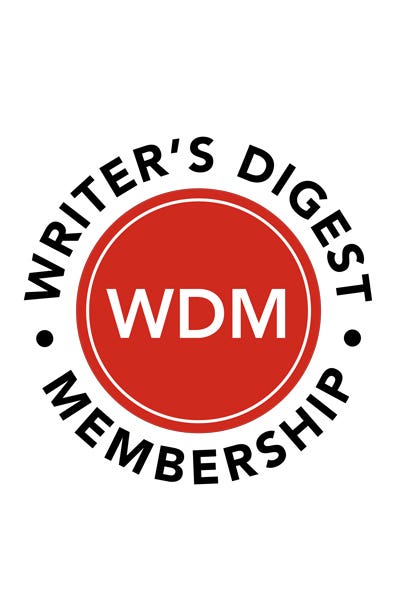Tips to Help You Publish Your Personal Essays
In her book Writing Personal Essays, author Sheila Bender gives these tips for those writers interested in publishing their personal essays.
Personal essays are often written because authors have a need to answer a life question. Sometimes, though, they are written specifically for a particular market. And, either way, there is a growing market for personal essays. It is composed of literary magazines, newspapers, popular magazines, trade and professional journals, thematic anthologies with writings by selected authors and book-length collections by individual authors. Most authors of essay collections and most authors of work included in anthologies have first published their work widely in periodic publications. For instance, the 1994 essay collection Paper Trail by Michael Dorris includes essays that first appeared in a range of publications: Family Circle, TV Guide, Ladies Home Journal, Parents, the New York Times, the Los Angeles Times, Center for Disease Control, College English, Booklist, Hungry Mind Review, and Three Penny Review among others.
Focusing on publishing essay by essay pays off. Concentrating on three areas helps you do this.
- Read publications that use personal essays to get a first-hand feel for what editors like, where essayists are finding publishers, and how essays are used in periodic literature.
- Learn to use market directories available at libraries or for purchase to expand your idea of the market.
- Create an organized, continuous submission process to keep your work in the mail to editors.
You may want to consider building your publication credits by publishing in local small press and specialized publications first, then in regional or wider circulation ones, and then in national publications. Since well-known publications get thousands of submissions from which they must select only a very few essays, even after publishing in well-known national venues, many authors continue to publish personal essays in the smaller literary journals.
Remember, the value in publishing your personal essay is in sharing your work with people who might be moved by your words and by your experience. If you want to see your essays published without delay, you must be creative and thorough in your search for places to submit your work. The closer to home you submit your work, the more chance there is of seeing it in print. Your work may actually be of particular interest because it is locally written. Local neighborhood newspaper editors and editors of local literary journals may be more receptive to your work and more willing to offer guidance if you are a new writer. Having published locally helps you introduce yourself and your work to editors of publications further from your home base.
Find publications that include personal essays
The best way to find markets for your work is to read as widely as possible, noting which publications regularly feature personal essays. Such publications range from tiny, local newsletters to large-circulation, nationally distributed magazines.
Local and special interest publications. Cafes and delis in large towns and cities of all sizes have become distribution points for many free specialty publications. Every week there are new ones and better and better issues of the ones that have been out for a while. The interest areas of these publications range widely. They may cover the local music scene, women in local businesses, the arts, theater, drug dependency recovery, alternative health care, spirituality, retirement, raising families, being gay, motorcycling, eco-wisdom, ethnic news, RV-ing, computing, employment, vacationing and buying or renting homes. I''ve come across a free literary magazine subtitled "a journal of imaginative trouble." Each of these publications will most likely have a personal essay or two by authors whose experiences are in line with the publication''s interests. Think about the life experience essays you have written and about why one or more could be of interest to the editors of one of these publications. You may get paid only in copies, but you will get a chance to build up your publication history.
Form the habit of being continually aware of publications. For instance, when I go to my health clinic, I see an in-house magazine with the personal stories of patients and their doctors. Several times a year, the alumnus magazine from the college I attended as an undergraduate arrives in my mailbox with personal stories by alumni and professors and students. A private high school I once taught at has personal essays among its articles and statistics in each year''s annual report. When I work out in a gym, I find industry magazines that might feature someone''s story about how exercise paid off in their lives. When I go to the paint store, I find little publications about home repair with do-it-yourself first-person accounts. The college that I teach at has several newsletters for staff and faculty in addition to the student published newspaper which sometimes uses work by staff and faculty.
Be sure to read editions of your local town, city, and neighborhood newspapers and see if they solicit and/or publish first-person essays for their living or local scene sections. Weekly or monthly tabloid format newspapers may use personal essays for their back page.
Small press literary publications. Many small press literary publications are produced by universities or by groups of writers supported by endowments and grants. Many of them are famous and long established. Some are very new. Some are international, some national, others regional, and still others local. You will certainly want to find many samples of small press literary magazines.
Browse them in your library, at a large bookstore or in a well-stocked newsstand. You can also find out about them by reading directories. Sometimes one distributor may be involved helping a number of small press publications get to market. You may be able to find out the distributor''s name from a newsstand owner, and then you can talk directly to the distributor about small press titles and where to find them in your area.
In addition, many of these publications have taken to advertising in magazines like Poets and Writers and the New York Times Book Review. Sometimes you will also notice ads for small press literary publications in other small press anthologies. Don''t forget to call the English departments of local universities, colleges and community colleges to find out if creative writing journals seeking submissions from writers are published in your area.
If some of the people you know are writers, be sure to ask to see any small press publications in which they have published their work and publications to which they subscribe. When I was handed a copy of the Georgia Review in which a friend of mine had published an essay, the publication made a stronger impact on me than it had ever done before. Reading the published work of someone you know brings the possibility of your own publication nearer to home. It can happen!
The mainstream popular press. Browse through news magazines, women''s and men''s magazines, teen magazines, sports magazines, house magazines, hobby magazines, electronics magazines and so on to see if they publish personal essays from people outside their own staffs. Pay attention to the topics and experiences portrayed in these essays. How do the essays seem to fit the publication''s focus? Would one of your essays be suitable for that focus?
Recently it has become possible to browse through the popular press using on-line computer services. A computer user can find titles and download sample articles from the bulletin boards. There are also services that have files from special interest magazines, business publications, and major newspapers as well as directories of these publications. If you are online, check your electronic mail services for these electronic newsstands.
It is not particularly easy to get your essays published in these national venues, but with a publication history and a close tie-in between your essay topic and the magazine''s focus, you may succeed.
Essay collections. Ask booksellers to direct you to collections by well-known essayists. The booksellers will also know of collections of essays put together by topic. For instance, there are essay collections featuring writers on writing, writers on cross-cultural experiences, Irish writers on the experience of being Irish, and daughters on the experience of having literary mothers. These books are not necessarily shelved under the subject "essays"they may be in ethnic studies or women''s studies or men''s movement literature or in the writing section or in the travel section or even in literary criticism. Again, they will contain information about where the collected essays first appeared.
University and college bookstores will have excellent collections of essays put out by the college text divisions of major publishers. These will be shelved with the texts required for students'' English course work. Since professors order these books in just the right numbers for their classes, you should use the shelves for browsing and then ask the bookseller to order you a copy of any you might want to buy. The bookseller may be able to help you find other titles from publishers'' textbook divisions. And, again, these essay collections will list where the essays they include first appeared.
Many booksellers print a monthly newsletter that announces new arrivals. Sign up to receive these newsletters. Many new collections of essays are being published and advertised. By reading the newsletters, you can add to your knowledge of presses publishing personal essay collections, and, by scanning the books, you can learn more about where the authors first published their personal essays.
Be sure also to scan book reviews. Small press magazines often contain reviews of anthologies or collections of essays by smaller regional presses. Although you shouldn''t overlook the New York Review of Books and the New York Times Book Review section for reviews of collections of essays, state or special interest magazines such as Alaska Magazine and Sierra Magazine, for example, may review books of essays nor mentioned other places. Writers on nature and ecology, for example, usually write essays and more often their collections are reviewed in magazines concerned with those topics.
Some presses publish a compilation of each year''s best essays. An important one is The Best American Essays put out each year by Ticknor and Fields. Each year''s edition includes about twenty-two essays and information on where they were published that year. It also includes a list of other notable essays and where they were published as well as biographical notes on the authors published in the current edition. Those notes often include the names of other books and presses.
Another yearly anthology is The Pushcart Prize: Best of the Small Presses published by The Pushcart Press in Wainscott, New York. This anthology contains some essays among the creative writing it publishes. In addition to publication information about the essays and biographical notes about the authors, this anthology also includes a list of all the presses featured in past The Pushcart Print Editions. Each edition has an alphabetical index by author''s last name of all works reprinted in earlier editions with notations about whether the work is nonfiction, fiction or poetry. Another collection, Creative Nonfiction is a new twice-yearly anthology from the Department of English at the University of Pittsburgh.
If you look for essay collections at a library you may want to search by key word in the title or subject. Try key words like first-person writing, personal narrative, personal experience, and personal essay, in addition to essays.
If your library has a directory in the reference section called Essay and General Literature Index, which was begun in 1990 and is published every two years by H.W. Wilson, you can use it to help locate places to submit your essays by looking up subject headings. For instance, if you look up "trees," you will find some listings about essays concerning trees in publications you might not have heard of such as American Forests. The Reader''s Guide to Periodical Literature, also published by H.W. Wilson, is in every library''s reference section. Here, too, you can use a subject head. However, it is hard to tell an essay from an article by this index''s descriptions.
Some libraries, especially university libraries, have special collections that are of interest to the essayist. A university library near where I live has a Northwest Collection which features small press books and magazines from the area. Perusing these books and magazines and taking down information about the editors is useful for finding local markets.
Sheila Bender is a teacher and the author of a volume of poetry entitled Love From the Coastal Route and coauthor of Writing in a Convertible With the Top Down. She lives in Seattle, Washington.
Excerpted from Writing Personal Essays. Copyright 1995 by Sheila Bender. Used with permission of Writer''s Digest Books, a division of F&W Publications, Inc. All rights reserved. No part of this excerpt may be reproduced or reprinted without permission in writing from the publisher.









